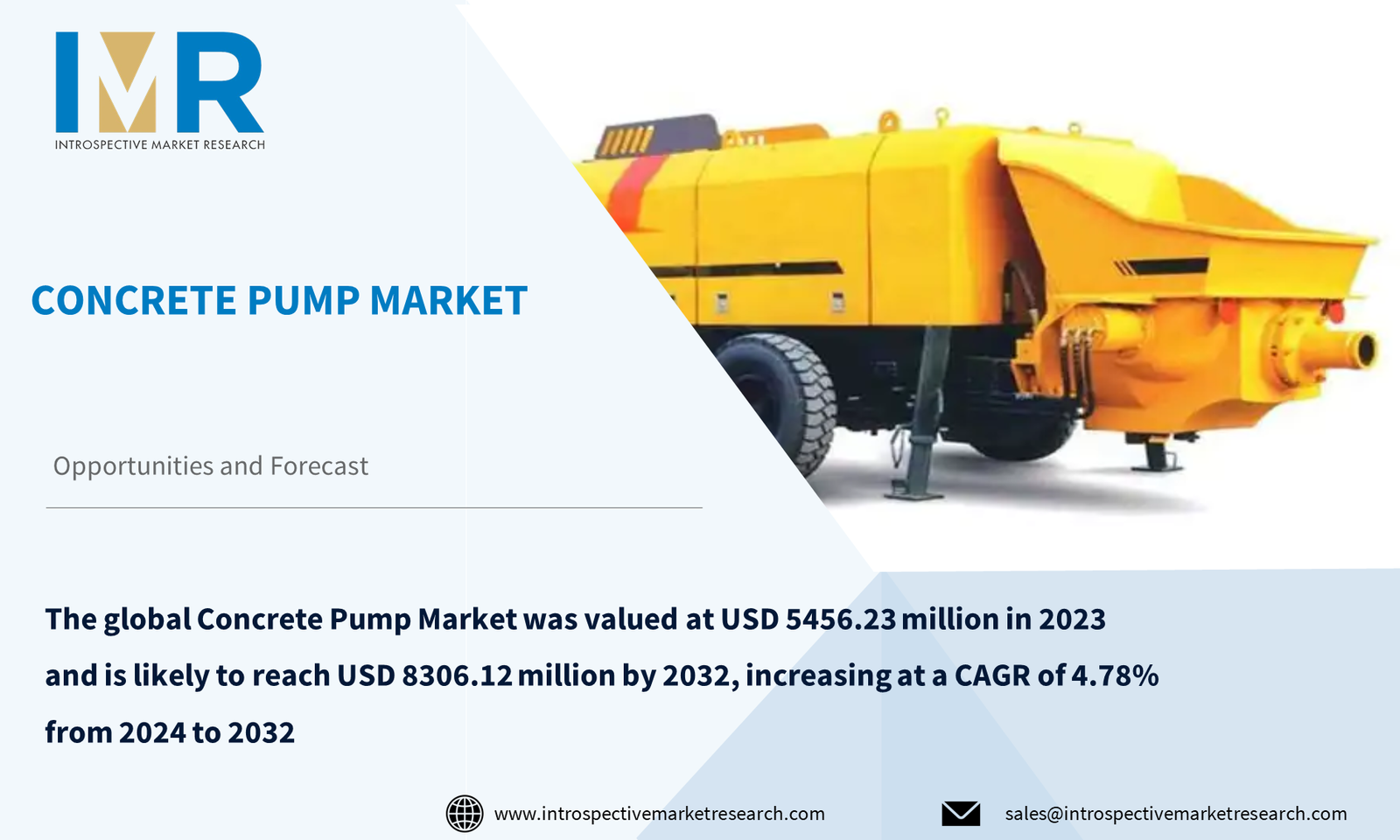2-EthylhexylMethacrylate(2-EHMA) Market
According to a new report published by Introspective Market Research, titled, “2-EthylhexylMethacrylate(2-EHMA) Market by Type, Technology and Application: Global Opportunity Analysis and Industry Forecast, 2024–2032,”
the global 2-EthylhexylMethacrylate(2-EHMA) market size was valued at $ 944.65 million in 2023, and is projected to reach $ 1529.48 million by 2032, registering a CAGR of 5.50% from 2024 to 2032.
2-Ethylhexyl methacrylate (2-EHMA) is an essential chemical for industrial use, especially in the synthesis of polymers and resins. It improves the flexibility and durability of materials, enabling producers to alter product attributes for best results in different environments. Due to its many uses, 2-Ethylhexyl methacrylate (2-EHMA) is widely used in a variety of industries. 2-EHMA improves the wearability, flexibility, and impact resistance of acrylic polymers and resins, which are primarily produced using it. It also plays a critical role in the formulation of sealants, coatings, and adhesives, offering enhanced durability and adhesion in a variety of applications, from medical adhesives to automobile coatings.
The 2-EthylhexylMethacrylate(2-EHMA) Market is segmented into Type, Technology, Application, and region. By Type, the market is categorized into Transesterification and Esterification. By Technology, the market is categorized into Free Radical Polymerization and Solution Polymerization. By Application, the market is categorized into Paints and Coatings, Adhesive and Sealants, Lubricant Additives, Fiber Treatment Agents, and Textile Auxiliaries. By region, it is analyzed across North America (U.S.; Canada; Mexico), Eastern Europe (Bulgaria; The Czech Republic; Hungary; Poland; Romania; Rest of Eastern Europe), Western Europe (Germany; UK; France; Netherlands; Italy; Russia; Spain; Rest of Western Europe), Asia-Pacific (China; India; Japan; Southeast Asia, etc.), South America (Brazil; Argentina, etc.), Middle East & Africa (Saudi Arabia; South Africa, etc.).
One major factor driving the 2-Ethylhexyl methacrylate (2-EHMA) market's growth trajectory is the increasing need for high-performance materials. Materials that provide improved durability, flexibility, and resilience to environmental stressors are becoming more and more popular in a number of industries, including electronics, healthcare, construction, and automotive. Consequently, 2-EHMA becomes a sought-after solution to fulfill these changing expectations because of its capacity to strengthen the qualities of polymers and resins.
The 2-Ethylhexyl methacrylate (2-EHMA) market has a lot of room to grow because of the focus on bio-based and sustainable products. Industries are aggressively searching for substitutes for conventional materials generated from petroleum as environmental concerns and the need to minimize carbon footprints become more widely recognized. 2- Due to its versatility, 2-EHMA shows promise as a crucial ingredient in the creation of environmentally friendly polymers and resins that satisfy changing requirements without sacrificing performance standards.
Global 2-EthylhexylMethacrylate(2-EHMA) Market, Segmentation
The 2-EthylhexylMethacrylate(2-EHMA) market is segmented on the basis of Type, Technology, Application, and region.
Type:
The type segment is further classified into Transesterification, Esterification. Among these, the Transesterification sub-segment accounted for the highest market share in 2023. The transesterification sector of the 2-Ethylhexyl methacrylate (2-EHMA) market is ready to take the lead in propelling expansion. An essential step in the synthesis of 2-EHMA is transesterification, which is the transfer of ester groups from one molecule to another, usually between an alcohol and an ester compound. This method's popularity in the market can be attributed to a number of benefits, including as its high efficiency, adaptability, and compatibility with different feedstocks.
Application:
The application segment is further classified into Paints and Coatings, Adhesive and Sealants, Lubricant Additives, Fiber Treatment Agents, Textile Auxiliaries. Among these, the Paints and Coatings sub-segment is anticipated to show the fastest growth by 2032. Leading the growth of the 2-Ethylhexyl methacrylate (2-EHMA) market was the paints and coatings category, which held the greatest share. The widespread use of 2-EHMA as a crucial component in the formulation of paints and coatings with improved performance qualities is responsible for this dominance. Its integration improves coatings' adherence, weatherability, and durability, making them appropriate for a variety of industrial applications.
Region:
The 2-EthylhexylMethacrylate(2-EHMA) market in Asia-Pacific is projected to show the fastest growth by 2032. 2-As the 2-Ethylhexyl methacrylate (2-EHMA) market grows, Asia Pacific stands out as the leading area with room to grow significantly. Numerous reasons, such as quick industrialization, growing infrastructure, and the expanding construction and automobile industries, contribute to this supremacy. The region's economies are growing at a fast rate, which is driving up demand for high-performance materials like 2-EHMA. These materials are needed because different industries need strong coatings, adhesives, and polymers.
Some of the leading 2-EthylhexylMethacrylate(2-EHMA) market players are
- Celanese (US)
- Dow Chemical (US)
- Evonik Industries (Germany)
- BASF Group (Germany)
- Wacker Chemie (Germany)
- Arkema (France)
- Solvay (Belgium)
- MITSUBISHI GAS CHEMICAL (Japan)
- Kyoeisha Chemical (Japan)
- Nippon Steel Chemical (Japan), and Other Active Players.
Key Industry Developments
- In May 2024, Dow announced a capacity expansion resulting from its minority equity investment in SAS Chemicals GmbH, a German-based specialty chemical producer of sealants and components used in insulating glass manufacturing, aimed at enhancing its holistic façade offerings. For over five decades, silicone insulating glass sealants from Dow had been utilized in diverse commercial structural glazing applications. They offered superior UV resistance and structural capability, inspiring designers to explore unique architectural possibilities for glass façades.
- In April 2024, Celanese Corporation (NYSE: CE) recently achieved significant milestones in its Acetyl Chain (AC) business operations. In Clear Lake, Texas, the company launched a new 1.3 million ton acetic acid expansion in March 2024, positioning it as the world's most cost-effective and environmentally friendly facility of its kind. Concurrently, in Nanjing, China, Celanese expanded its vinyl acetate ethylene (VAE) capacity by 70 kt and completed debottlenecking projects for redispersible polymer powders (RDP), enhancing its regional capabilities to meet growing demand in Asia.
Key Findings of the Study / Key Industry Developments.
- Paints and Coatings expected to show the fastest growth by 2032, leading the market due to its use in improving adhesion, weatherability, and durability.
- Asia-Pacific projected to show the fastest growth by 2032, driven by rapid industrialization, growing infrastructure, and expanding construction and automobile industries.
- Increasing demand for high-performance materials in various industries such as electronics, healthcare, construction, and automotive.







